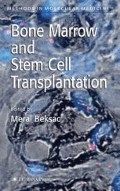Abstract
The hybridization products obtained by PCR using sequence-specific oligonucleotides (PCR-SSO) can be traced either by colorimetric-(streptavidin-biotin), X-ray-(digoxigenin-CSPD), or fluorescence-(FITC, PE) based detection systems. To achieve a faster, reliable, automated typing, microbead and fluorescence detection technology have been combined and introduced to this field (XMAP™ technology). For each locus, a maximum of 100 microspheres, which are recognizable by their specific color originating from two internal fluorescent dyes, are used. Each microsphere is coupled with a single probe that is capable of hybridizing with the biotin labeled complementary amplicon. Once hybridization occurs, it can be quantified via the fluorecence signal originating from fluorescently (Streptavidin-PE) labeled amplicons captured by the beads. Currently, there are two commercially available systems that differ in the scale of probes and the method of amplification or denaturation. One of these will be described in detail in this chapter.
Access this chapter
Tax calculation will be finalised at checkout
Purchases are for personal use only
References
Blasczyk, R. (1998) New HLA typing methods, in New Diagnostic Methods in Oncology and Hematology, (Huhn, D., ed.), Springer, Berlin, Germany, pp. 143–195.
Saiki, R. K., Bugawan, T. L., Horn, G. T., Mullis, K. B., and Erlich, H. A. (1986) Analysis of enzymatically amplified beta globin and HLA-DQ alpha DNA with allele specific oligonucleotide probes. Nature 324, 163–166.
Kostyu, D. D., Pfohl, J., Ward, F. E., Lee, J., Murray, A., and Amos, D. B. (1993) Rapid HLA-DR oligotyping by an enzyme-linked immunoabsorbent assay performed in microtiter trays. Hum. Immunol. 38, 148–158.
Bugawan, T. L., Apple, R., and Erlich, H. A. (1994) A method for typing polymorphism at the HLA-A Locus using PCR amplification and immobilized oligonucleotide probes. Tissue Antigens 44, 137–147.
Middleton, D., Williams, F., Cullen, C., and Mallon, E., (1995) Modification of an HLA-B PCR-SSOP typing system leading to improved allele determination. Tissue Antigens 45, 232–236.
Kennedy, L. J., Poulton, K. V., Dyer, P. A., Ollier W. E., and Thomson, W. (1995) Definition of HLA-C alleles using sequence specific oligonucleotide probes (PCR-SSOP). Tissue Antigens 46, 187–195.
Cereb, N., Maye, P., Lee, S., Kong, Y., and Yang, S. Y. (1995) Locus specific amplification of HLA Class I genes from genomic DNA: locus specific sequences in the first and third introns of HLA-A,-B and-C, alleles. Tissue Antigens 45, 1–11.
Robinson J., Malik., Parham, P., Bodmer, J. G., and Marsh, S. G. E. (2000) IMGT/HLA database a sequence database for the human major histocompatibility complex. Tissue Antigens 55, 280–287.
LifeMATCH Website (http://www.lifematchhla.com). Accessed June 2006.
One Lambda Inc. (http://www.onelambda.com). Accesed June 2006.
Wu, Y. Y. and Csako, G. (2006) Rapid and/or high throughput genotyping for human red blood cell, platelet, and leukocyte antigens, and forensic applications. Clin. Chimica Acta 363, 165–176.
Dunbar, A. S. (2006) Applications of Luminex® MAP technology for rapid, high throughput multiplexed nucleic acid detection. Clinica Chimica Acta 363, 71–82.
Fulton, R. J., McDade, R. L., Smith, P. L., Kienker, L. J., and Kettman, Jr. J. R. (1997) Advanced multiplexed analysis with FlowMetrix system. Clin. Chem. 43, 1749–1756.
Author information
Authors and Affiliations
Editor information
Editors and Affiliations
Rights and permissions
Copyright information
© 2007 Humana Press Inc.
About this protocol
Cite this protocol
Dalva, K., Beksac, M. (2007). HLA Typing with Sequence-Specific Oligonucleotide Primed PCR (PCR-SSO) and Use of the Luminex™ Technology. In: Beksac, M. (eds) Bone Marrow and Stem Cell Transplantation. Methods in Molecular Medicine, vol 134. Humana Press. https://doi.org/10.1007/978-1-59745-223-6_5
Download citation
DOI: https://doi.org/10.1007/978-1-59745-223-6_5
Publisher Name: Humana Press
Print ISBN: 978-1-58829-595-8
Online ISBN: 978-1-59745-223-6
eBook Packages: Springer Protocols

